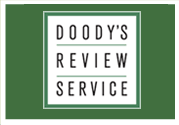|
|
|
eBook/Digital Version available from:
|
 Score: 97
Score: 97 |
 |
| Schatzberg's Manual of Clinical Psychopharmacology, 10th Edition |
 |
ISBN: 978-1-61537-534-9,
842 pages,
Soft Cover
ISBN-10: 1-61537-534-1 |
 |
| Copyright: |
2024 |
 |
| Edition: |
10th |
 |
| Author: |
DeBattista, Charles, DMH, MD; Schatzberg, Alan F., MD |
 |
|
Specialties:
|
Psychiatry |
 |
| Publisher: |
American Psychiatric Association Publishing |
|
800 Maine Avenue, S.W. |
|
Suite 900 |
|
Washington, DC 20024 |
|
UNITED STATES |
|
P: 800-368-5777
F: appi@psych.org |
|
http://www.appi.org |
 |
| List Price: |
$135.00 |
 |
| Google: |
|
|
 |
|
|
|
|
At A Glance
|
A seminal resource since the first edition was published in 1986, Schatzberg's Manual of Clinical Psychopharmacology has distinguished itself, from the very beginning, for its readability and comprehensive approach to the field. This tenth edition builds on that legacy, providing a thorough understanding of evolving treatments and medications. Blending evidence-based information with practical, real-world experience, this accessible volume examines the efficacy, dosing, and side effects of drug classes such as antidepressants, antipsychotic medications, mood stabilizers, and stimulants. Additional sections also discuss approaches to treatment-resistant disorders, pharmacotherapy for substance use disorders, and working in specific settings and with special populations?including emergency department treatment and treating pregnant patients, children, and individuals from minority and marginalized communities. Learn more and order here.
|
|
Reviewer:
|
Michael Easton,
MD
(Rush University Medical Center)
|
 |
|
Range
|
Question
|
Score
|
| 1-10 |
Are the author's objectives met? |
10 |
| 1-10 |
Rate the worthiness of those objectives. |
10 |
| 1-5 |
Is this written at an appropriate level? |
5 |
| 1-5 |
Is there significant duplication? (1=significant, 5=insignificant) |
4 |
| 1-5 |
Are there significant omissions? (1=significant, 5=insignificant) |
4 |
| 1-5 |
Rate the authority of the authors. |
5 |
| 1-5 |
Are there sufficient illustrations? |
N/A |
| 1-5 |
Rate the pedagogic value of the illustrations. |
N/A |
| 1-5 |
Rate the print quality of the illustrations. |
N/A |
| 1-5 |
Are there sufficient references? |
5 |
| 1-5 |
Rate the currency of the references. |
5 |
| 1-5 |
Rate the pertinence of the references. |
5 |
| 1-5 |
Rate the helpfulness of the index. |
N/A |
| 1-5 |
If important in this specialty, rate the physical appearance of the book |
N/A |
| 1-10 |
Is this a worthwhile contribution to the field? |
10 |
| 1-10 |
If this is a 2nd or later edition, is this new edition needed? |
10 |
|
 |
|
Reviewer:
|
Michael Easton,
MD
(Rush University Medical Center)
|
 |
|
Description
|
| This tenth edition book provides a readable, up-to-date guide to psychiatric medications and their expanding indications. |
 |
|
Purpose
|
| The purpose of the book is to review the ever-expanding number of available agents and their widening number of indications. It aims to provide an updated analog of evidence-based information and clinical experiences for training and practicing clinicians. |
 |
|
Audience
|
| The book is primarily for training and practicing psychiatrists. It can also be a useful resource for any clinician treating patients with psychiatric illnesses, including primary care physicians, medical students, nurses, or any clinician working in the mental health field. |
 |
|
Features
|
| This book consists of 13 chapters subdivided into various subjects. Chapters focusing on less commonly used agents have been shortened or removed to focus on widely used and newly approved ones, as well as agents in the later stages of review. There are also updated chapters of pharmacogenetic testing and other tests used to diagnose and tailor treatments to individual patients. The book starts with a review of general principles of psychopharmacology and diagnosis. It then devotes chapters to thoroughly review antidepressants, antipsychotics, mood stabilizers, antianxiety agents, hypnotics, and stimulants. Later chapters look at specialized topics such as augmentation strategies, substance use, emergency department treatments, pediatrics, geriatrics, and patients with developmental disabilities. The final chapter looks at laboratory-guided pharmacotherapy and testing to help personalize treatment. |
 |
|
Assessment
|
| This book is an excellent evidence-based review of current treatments. The information is clinically relevant and useful. It is a worthy resource for any training or practicing psychiatrist as well as other clinicians. |
 |
|
|
|
|
|
|
|
